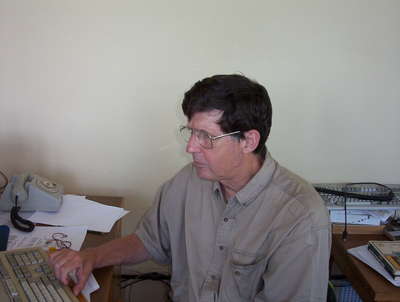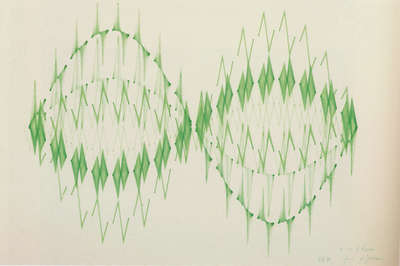Mihail Jalobeanu is a Romanian mathematician. During his tenure as a scientist at the computer department at the Institute for Stable Isotopes (National R&D Institute of Isotopic and Molecular Technology) in Cluj he developed his interest in computer graphics, inspired by the combination of a computer and a plotter. This resulted in the first exhibition of computer graphics in Romania in 1971, which was followed by others.
5
His special interest in computer graphics (stimulated by a Hewlett- Packard 9100 calculator with a HP 9125 plotter ) was finalized in the first computer graphics exhibitions in Romania (Cluj 1971,1972, Arad 1973, Timisoara 1974, Satu-Mare 1975, Bucuresti 1976). Source
In 1973 he met Georg Nees in Erlangen and got to know Herbert W. Franke in 1974 at a lecture in Bucharest which Franke gave as a part of the touring exhibition Wege zur Computerkunst (The Paths to Computer Art), 5th- 27th December 1974 at the Goethe-Institute. This is where Jalobeanu gave him the graphics, which are now in the possession of the Kunsthalle Bremen. His work first achieved artistic recognition in 1976 at an exhibition at the Ga/ena Noua in Bucharest. Working together with a designer, Jalobeanu also developed a method for the generation of decoration for porcelain and ceramics using a computer.
His career as a computer artist was disrupted by the political situation and he could not travel abroad after 1974. The central committee refused to support him for the exhibition at the Kunsthalle Vienna and some of his drawings later dissappeared from the Romanian Embassy of Vienna.
Jalobeanu summed up his work with the computer: “The drawings were for me like an investigation of the mathematical functions universe, combined with some rules of distortion or noise.” 5



